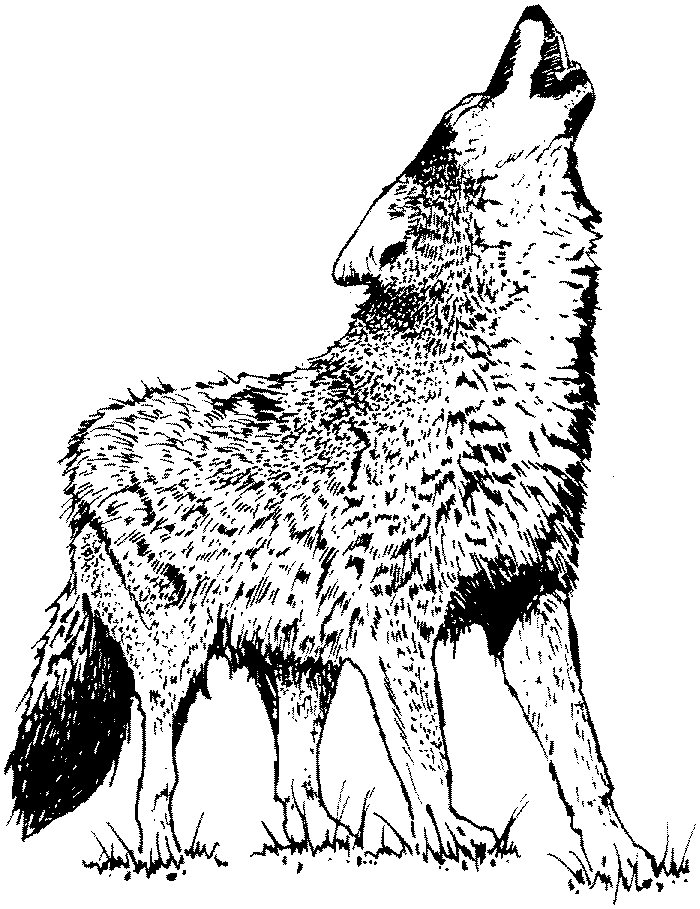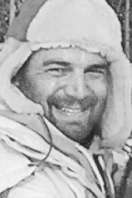 |
147 pound Elusive Wolf
Named
"Jim"
Finally Bagged
|
Amherst N.Y. man bags elusive Canadian wolf
Will Elliott
May 2004
|

|
Robert Cimato did some distance running on snowshoes to bring home a wolf that had been eluding northern Ontairo hunters for five years. |
"Can you run in snowshoes?"
That was all a Native American guide and outfitter asked of Robert Cimato, 36, of Amherst when he called to book a semi-guided wolf hunt in Kapuskasing, Ont.
No questions about his gear, stamina, hunting and shooting experience - just his snowshoe skills.
Cimato, an avid hunter since his early teens, had a special connection with wolves. "As a kid, I would always draw pictures of wolves and later took an art major at Daemen College," he said.
As for endurance, he spent much of his youth in boxing rings, working out and sparring. One training stint included rounds with Joe Mesi, during Cimato's Golden Gloves victory in the heavyweight (up to 201 pounds) division in 1995.
"For all the interest I had in wolves," this hearty hunter noted, "I had never seen a live wolf until I went on this Ontario hunt in mid-February this past year."
Stories surround all big-game animals hunted, but wolves in these northern reaches become quests larger than kills for consumption or trophy talk.
"The Indians up there have a name for every wolf that gets away from hunters and begins to develop a reputation," he said. Kapuskasing, the only city on Route 11 between Cochrane and Hearst, draws mining and timber shipments amid an open country dotted with small patches of woods hardy enough to endure Canada's cold winters.
Wolves move between these isolated woods and hunting for them can be arduous, even with snowmobiles, snowshoes, and GPS units in use.
"They told me about a wolf with a scar on its face that natives had named "Jim' for a hunter named Jim who had hunted for him for five years before Jim's death the previous year," he said.
Cimato began hunting in the area where this "Jim" wolf ranged, but he went in knowing his chances would be slim at even seeing this particular animal.
He found out early why his guide asked about running on snowshoes. On the first day out, he saw scar-faced Jim not once but twice. The wolf would run from each wood patch and then head in a different direction, calling for Cimato to don his snowshoes, run, untie his snowshoes, hitch a snowmobile ride, and then retie and start snowshoe running to another ambush point.
On the second sighting he thought he had a clear shot, seeing the wolf's head and what appeared to be a good view of its body. His shot only spurred this wolf into a faster pace.
"I missed. But I knew I was hooked on trying to get this one," he said after the first day.
He then hunted sunrise to sunset in sub-zero weather for the next three days without seeing another wolf.
"My GPS froze at minus-20 (Fahrenheit), but I kept trying to find this one wolf," he said.
On the last day of his scheduled hunt, he saw his monster wolf at 8 a.m. and started circling ahead of him for a shot, spotting four smaller wolves along the way. A whiteout moved through at noon, canceling any chance for a hunt the rest of that day.
The guide asked if he would like to stay and hunt an extra day. On his own and without work or family commitments back home, he jumped at this chance.
The next day began with clear skies. His guide got him into his wolf country early, but the hunt took both time and repeated spurts of energy. By 2 p.m. they had circled ahead enough for Cimato to get to a point ahead of the wolf's general movement.
"I finally got an open shot at 200 yards and took it," he said. This time, the wolf went down and he could see it wasn't moving - a clean kill. Native Americans here impute more than just trophy-taking to their wolf hunts; they seek bonds between their hunters and their kills.
For Cimato, that bond became even greater when he saw that that scar on the face of his wolf closely matched a scar he received while spar boxing years earlier. He also noticed that his shot taken days before had just clipped off hind leg hairs.
When his guide asked him what name he wanted to give to his wolf now that he had been the one to finally take this animal, he immediately thought of "Kevlar." "I chose than name because this animal for years had seemed "bullet proof,' " he quipped.
At 147 pounds, well above the average weight of 100 to 110 pounds for adult wolves taken in this region of Ontario, Cimato's trophy topped weights of all wolves taken this past winter.
Jim Block, at The Buck Stops Here Taxidermy, told Cimato he should have his wolf full-mount completed in about two months, including its prominent, storied scar.
|